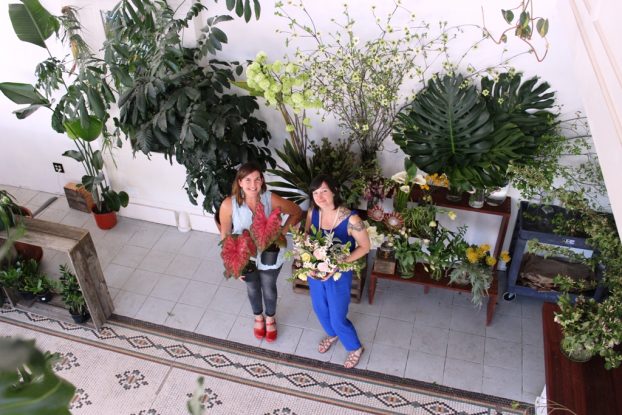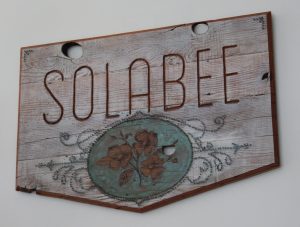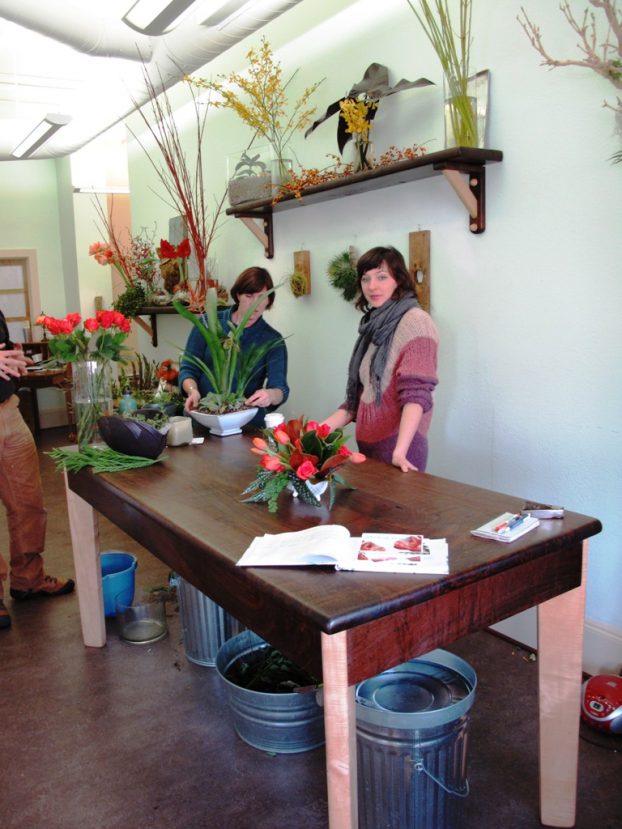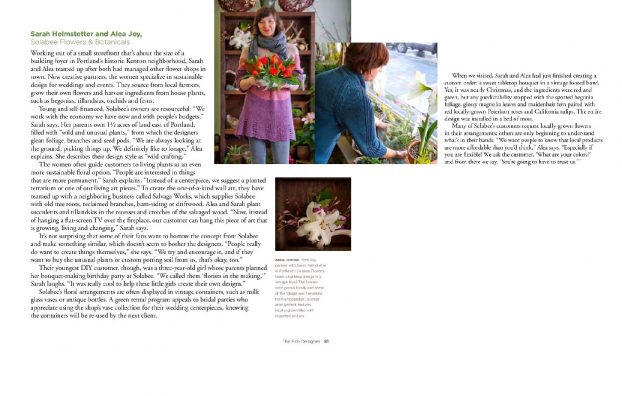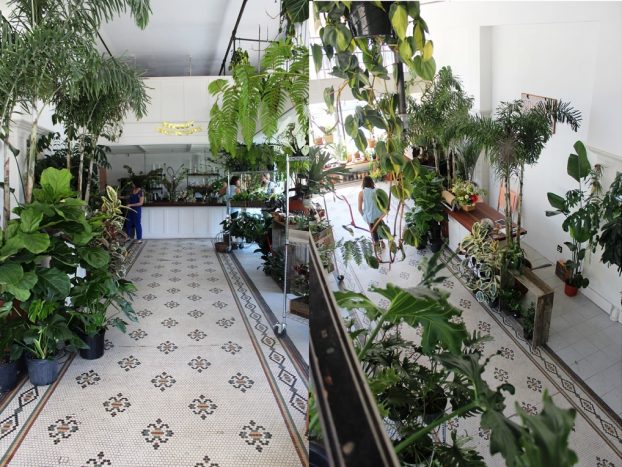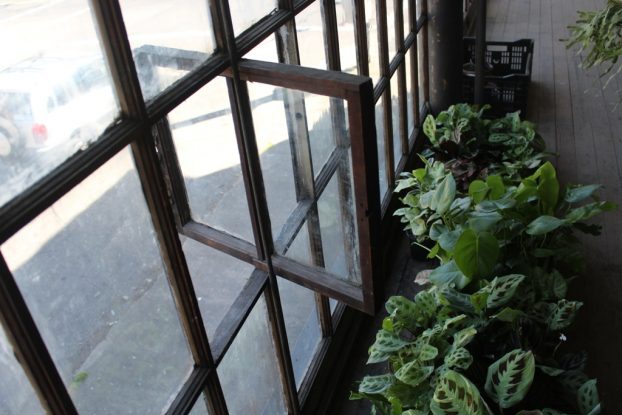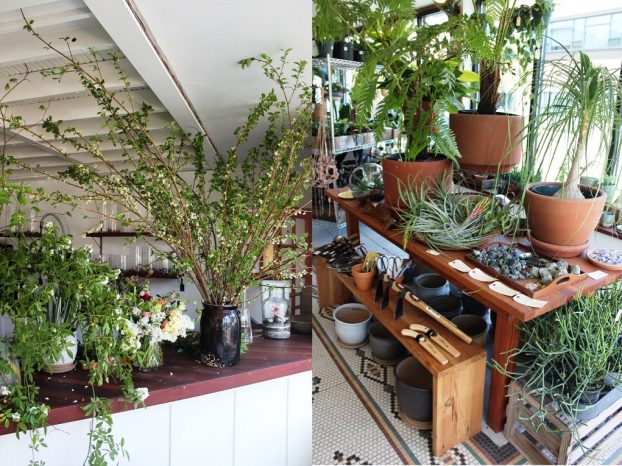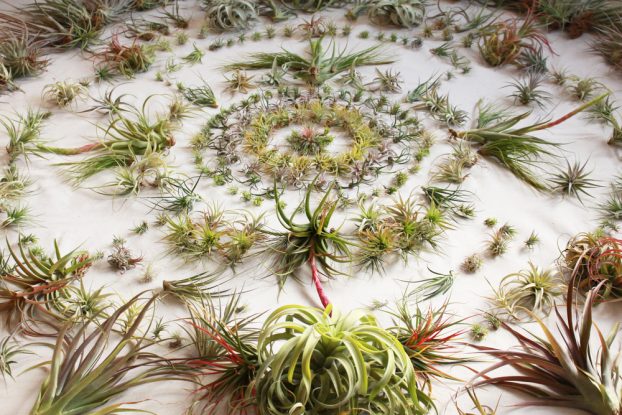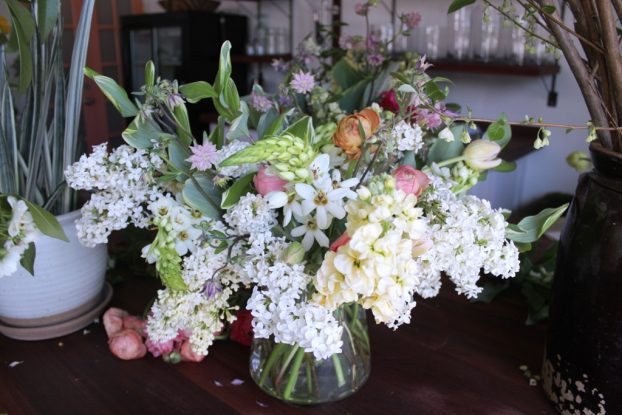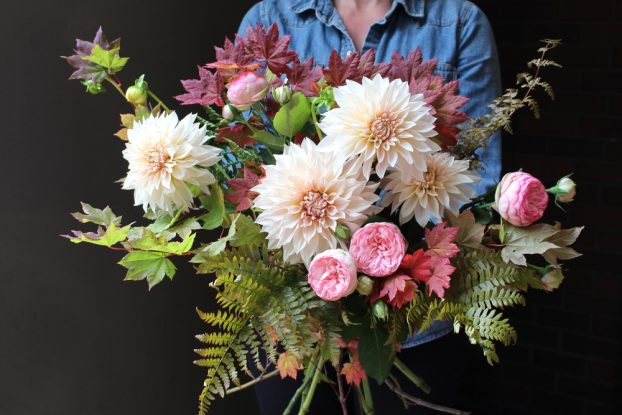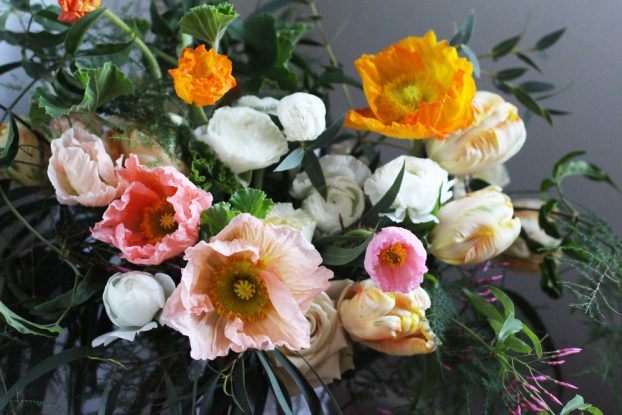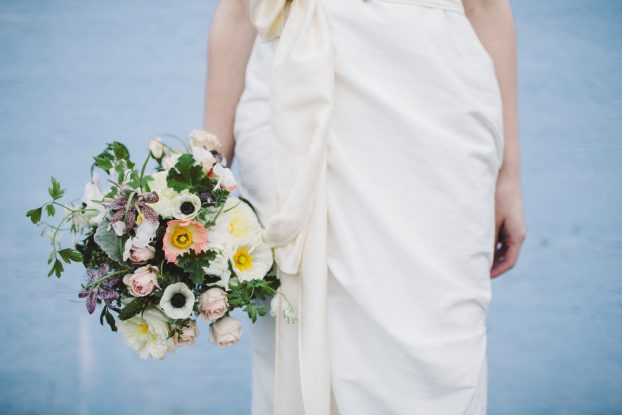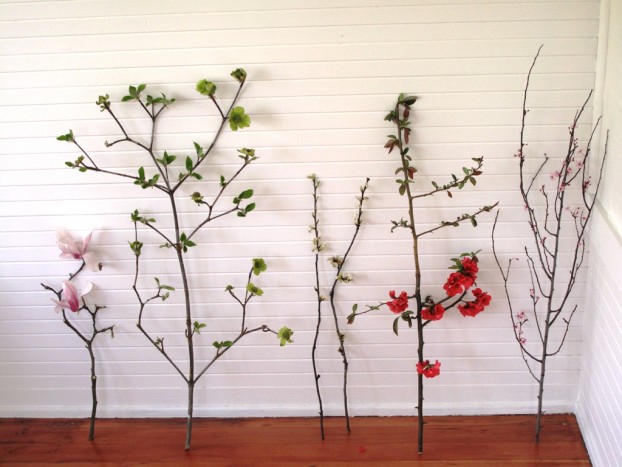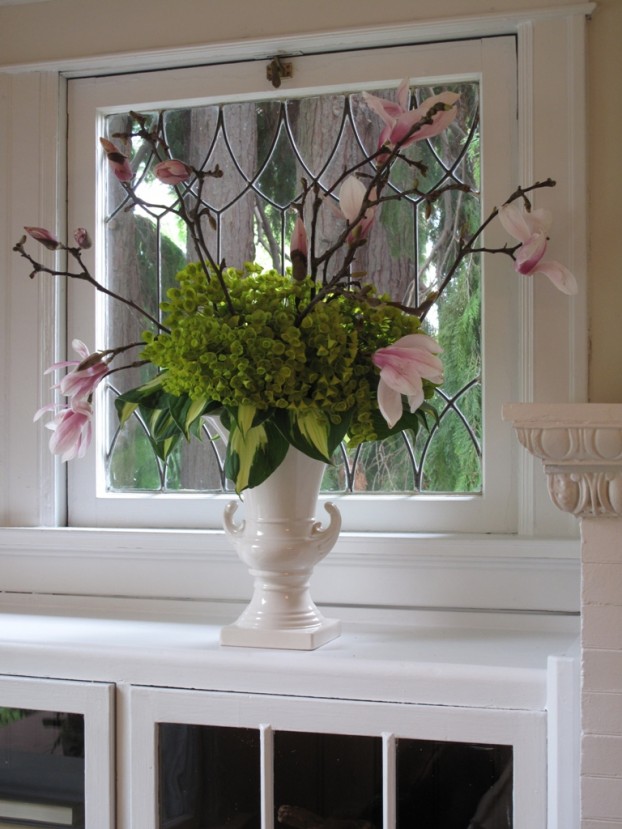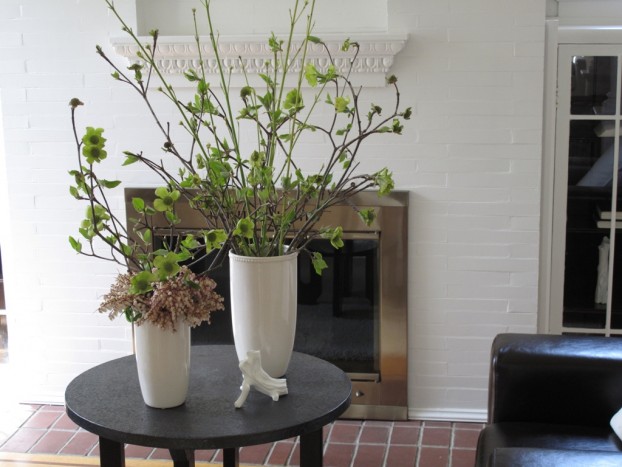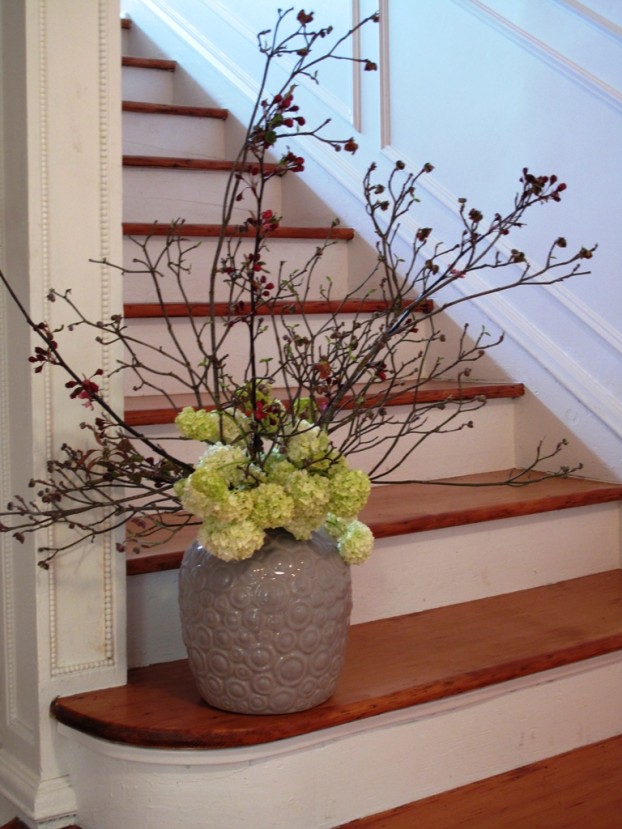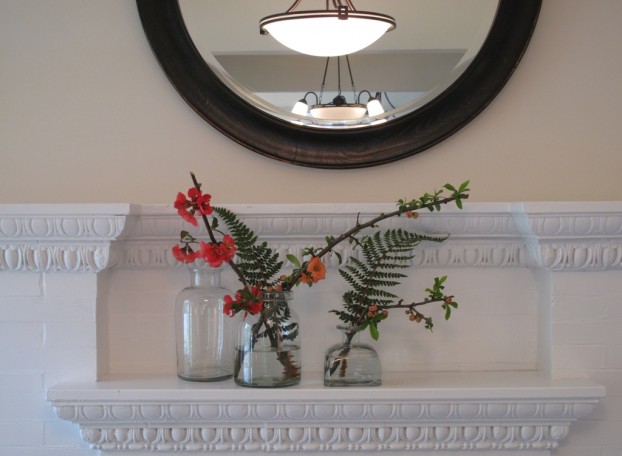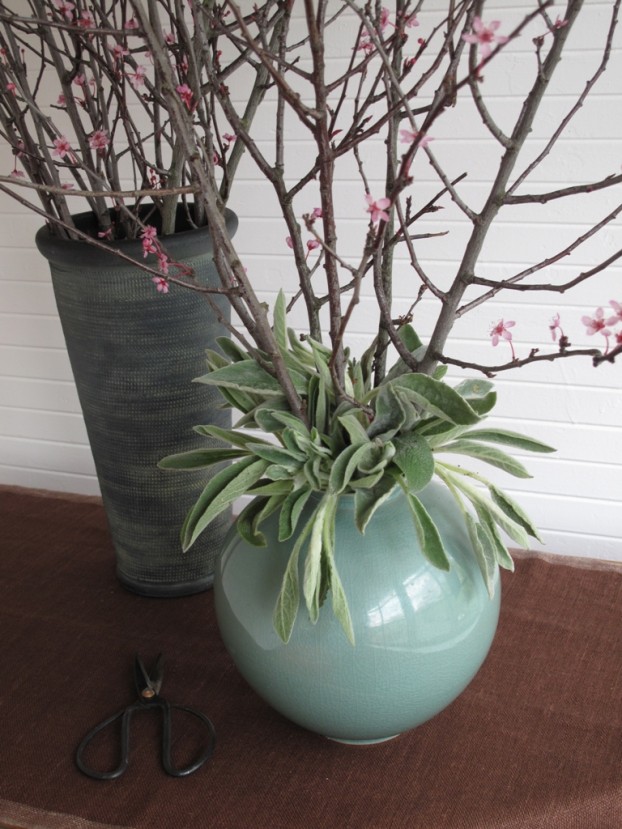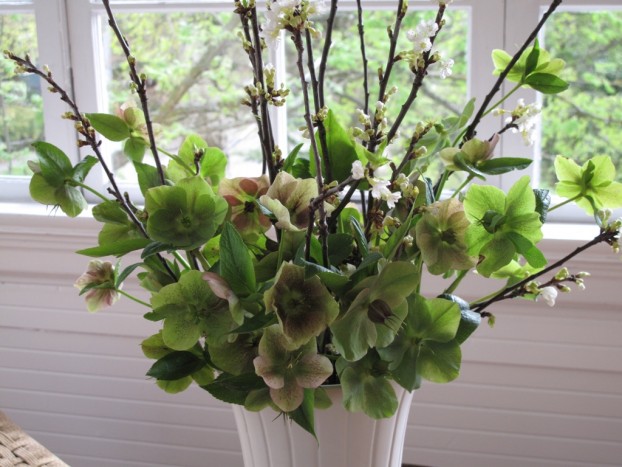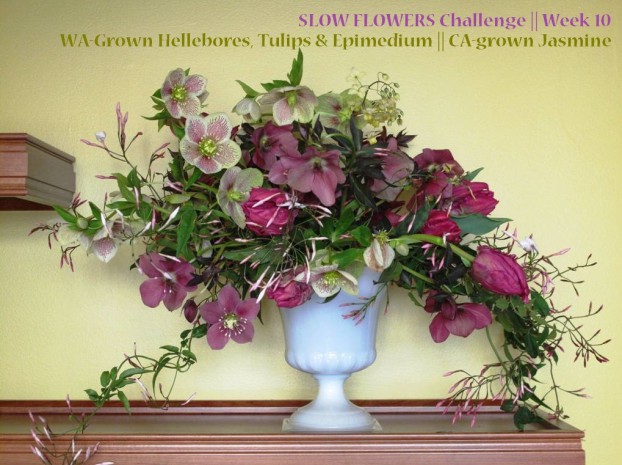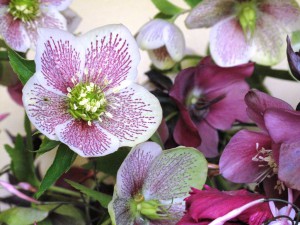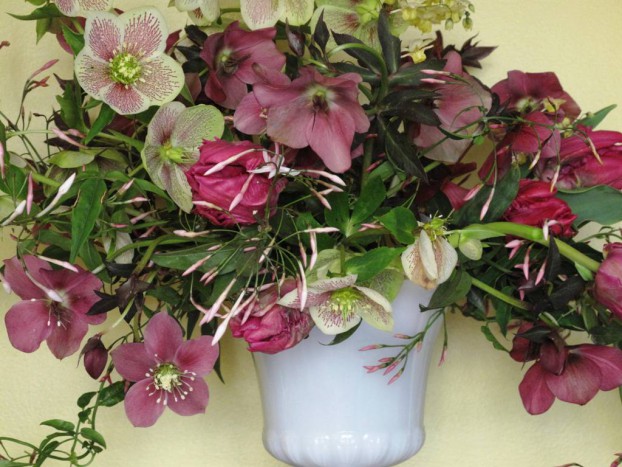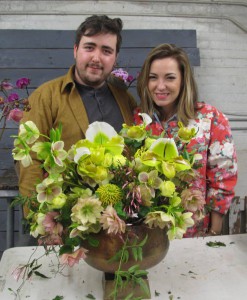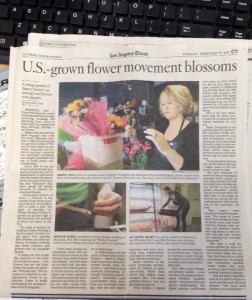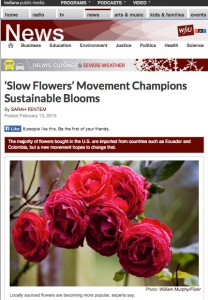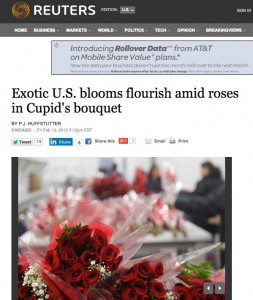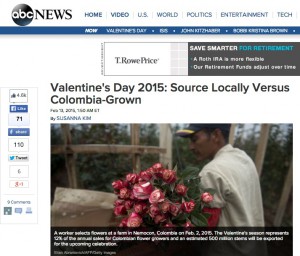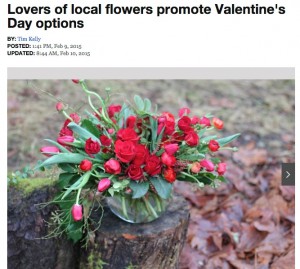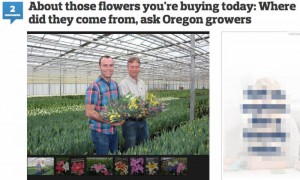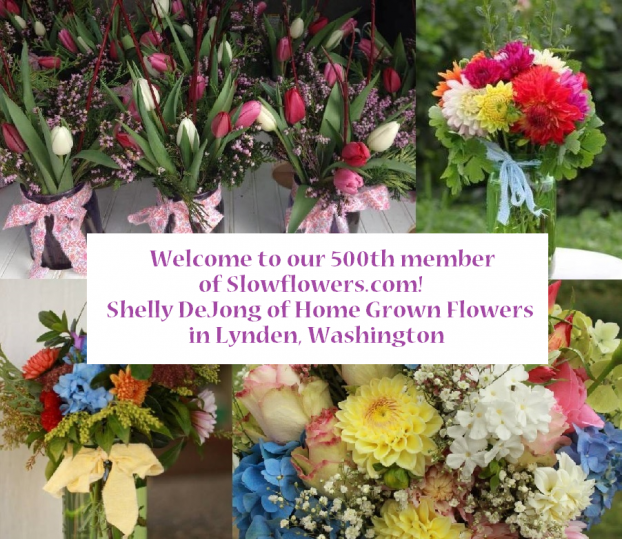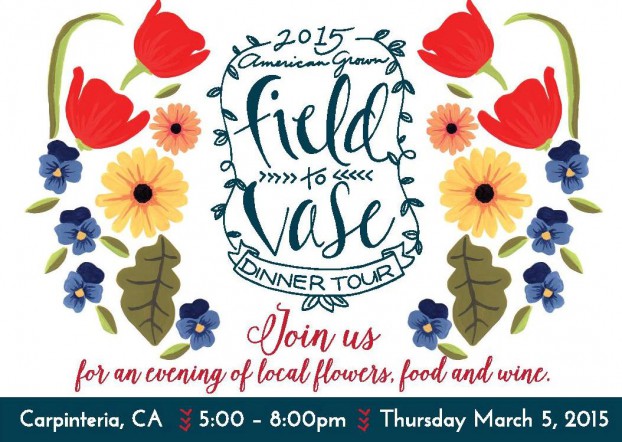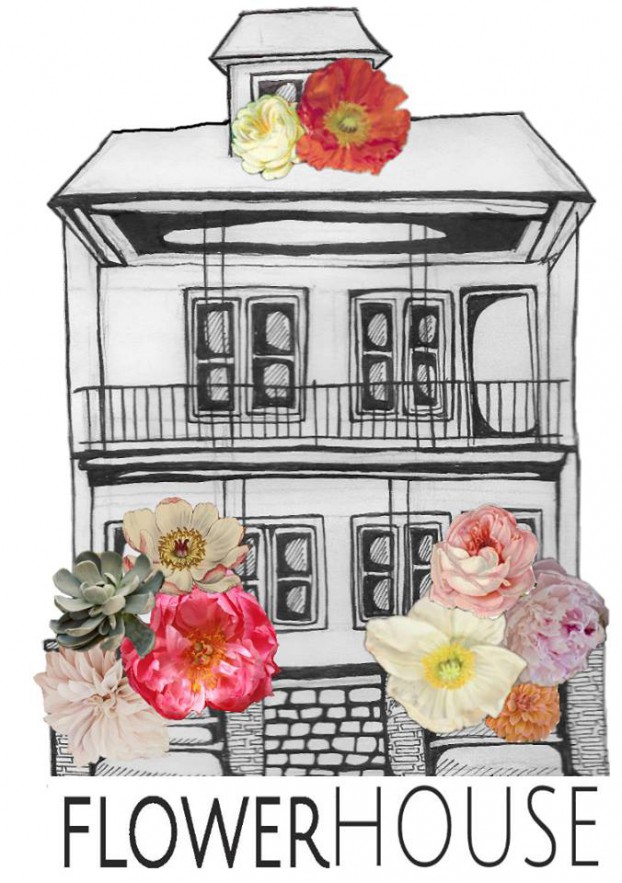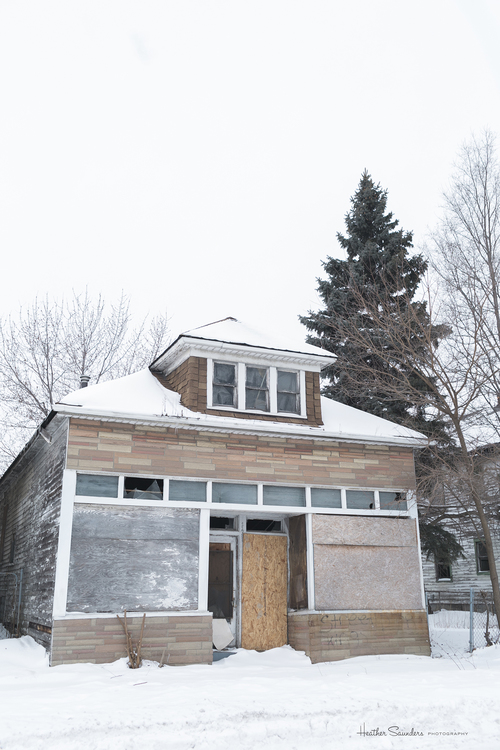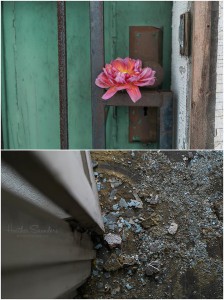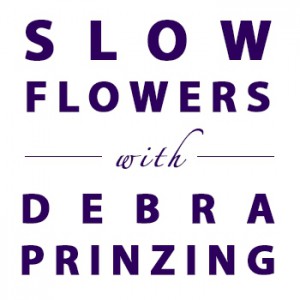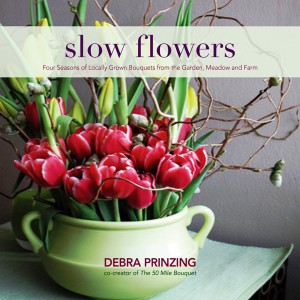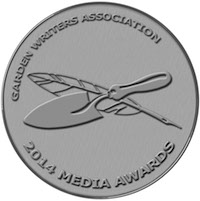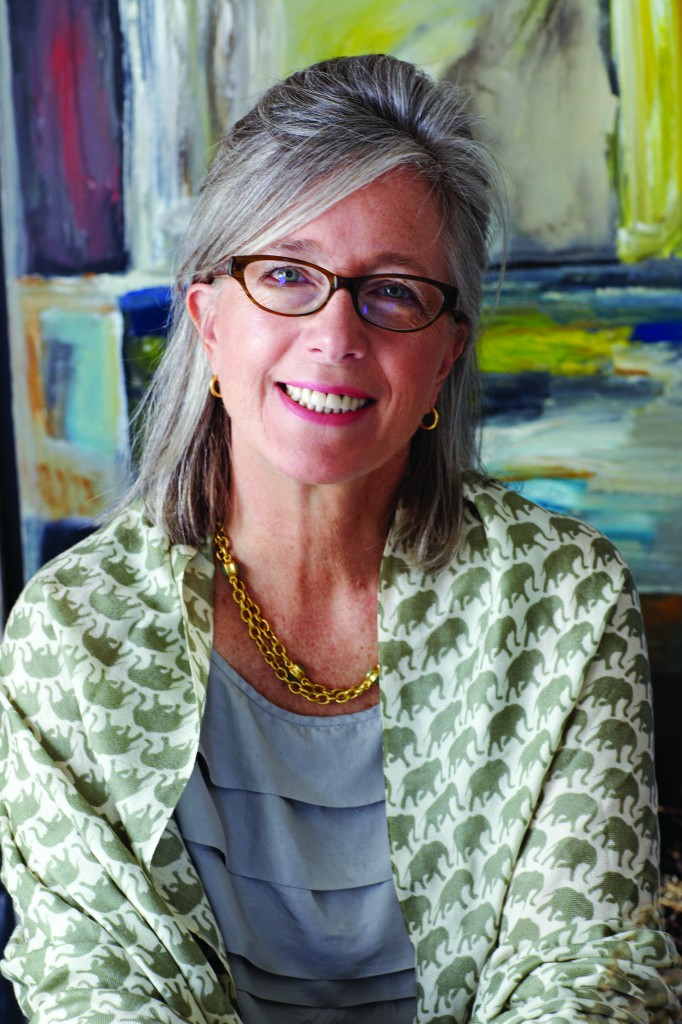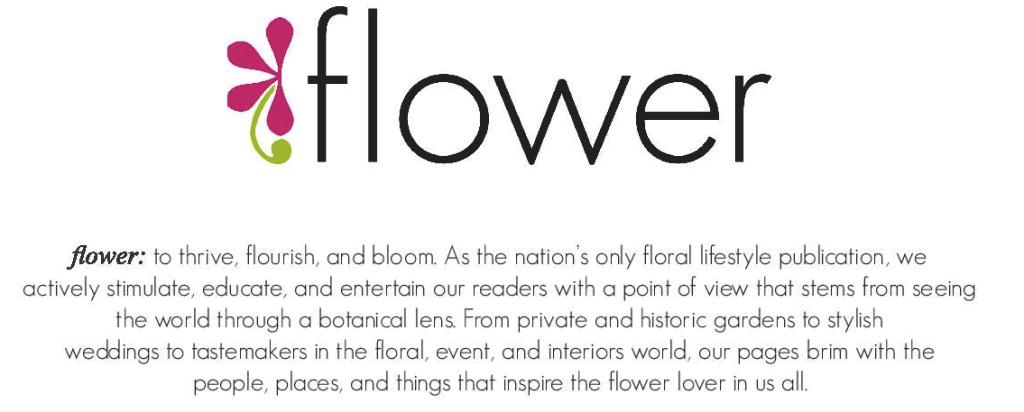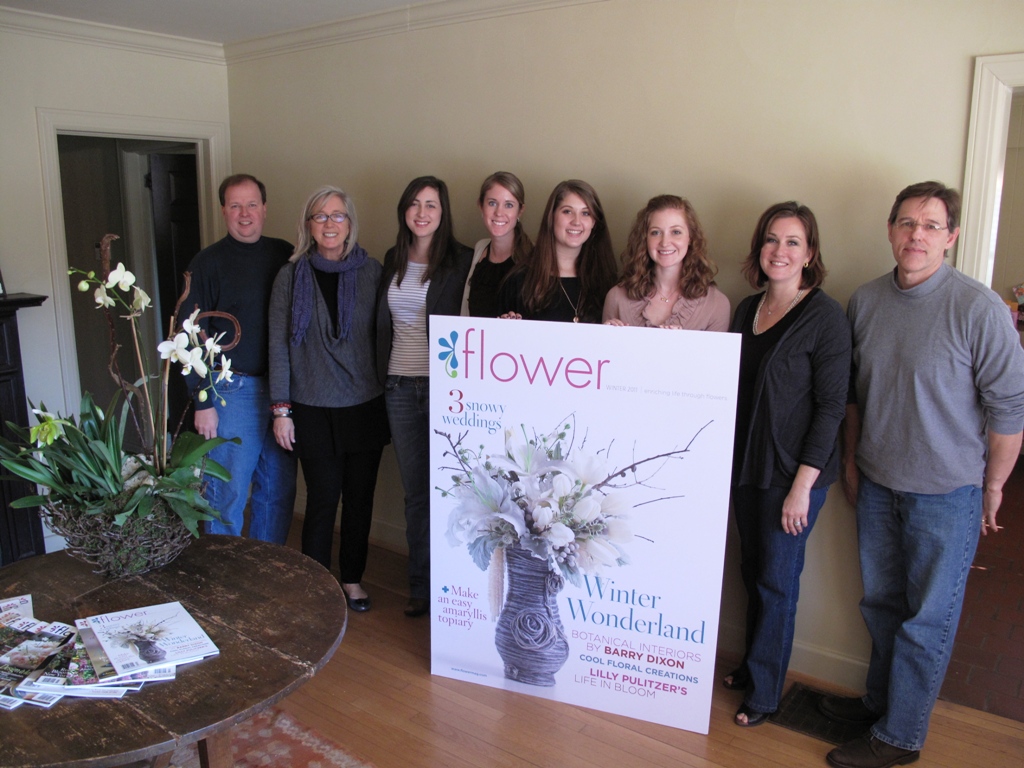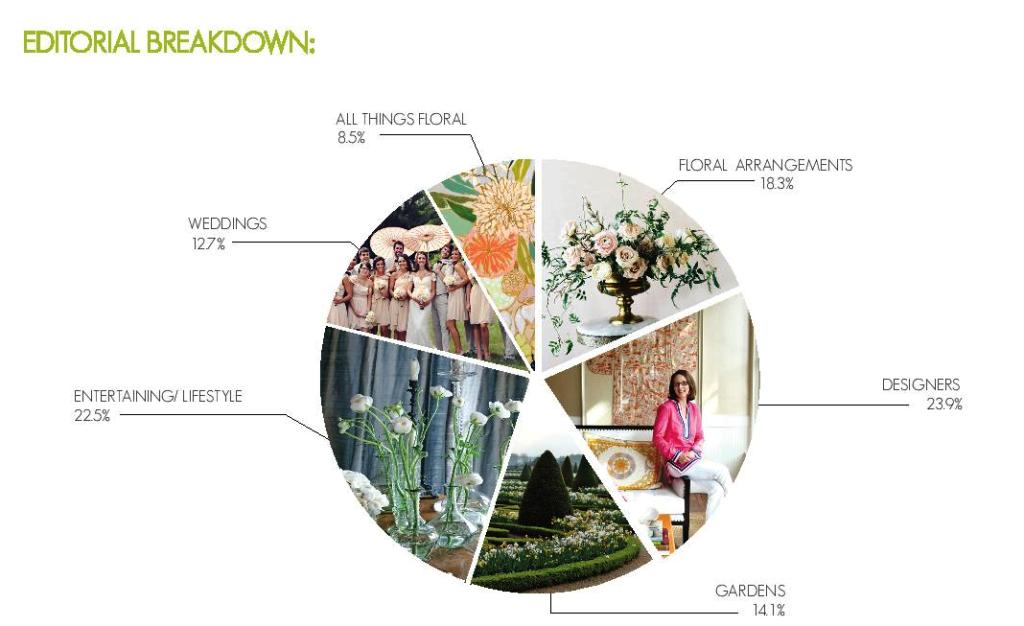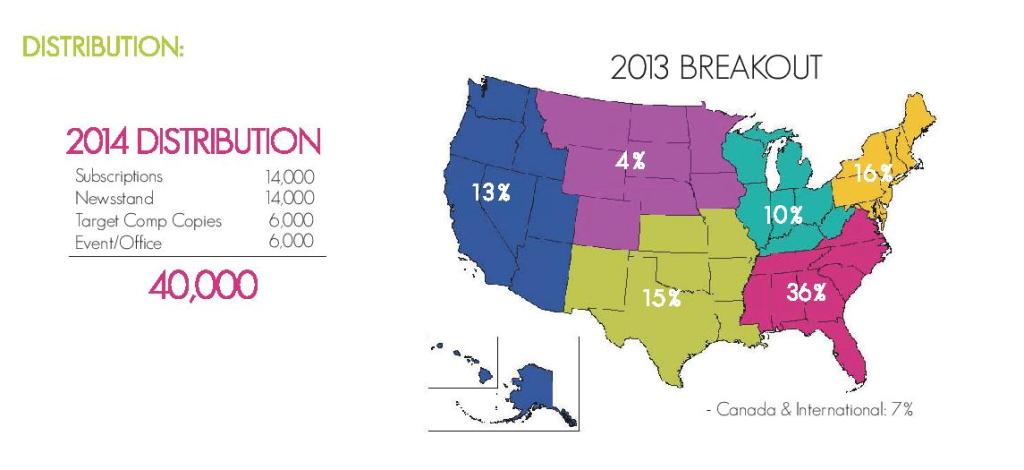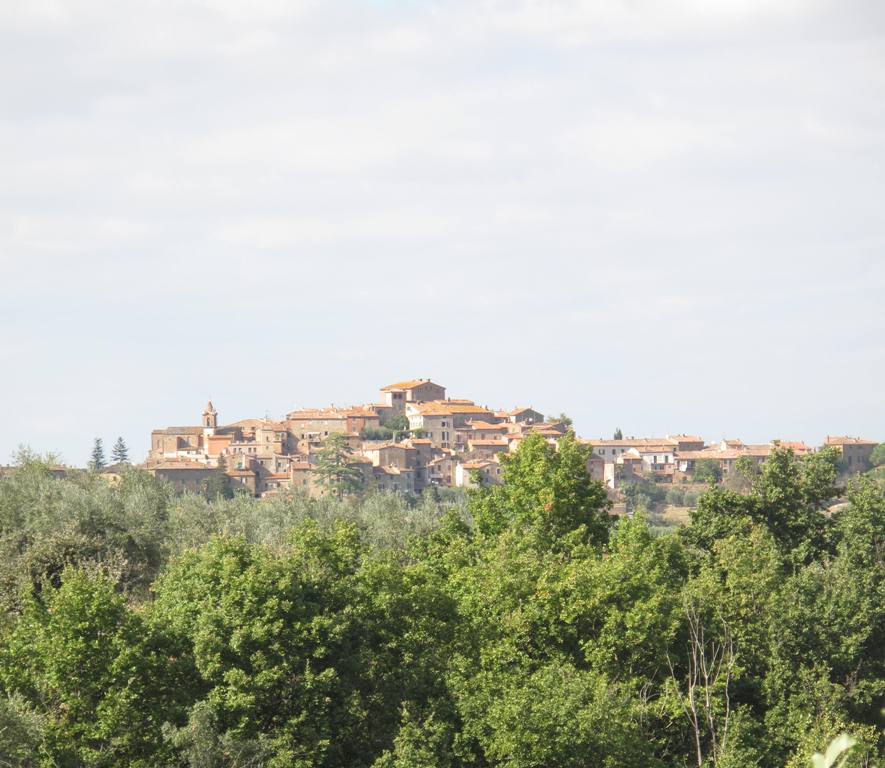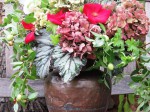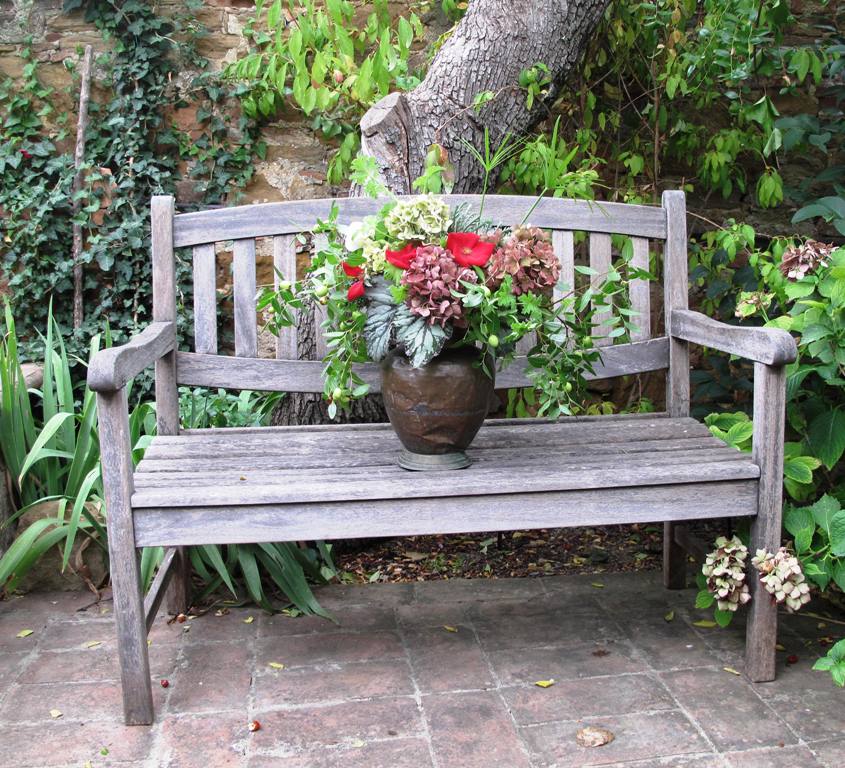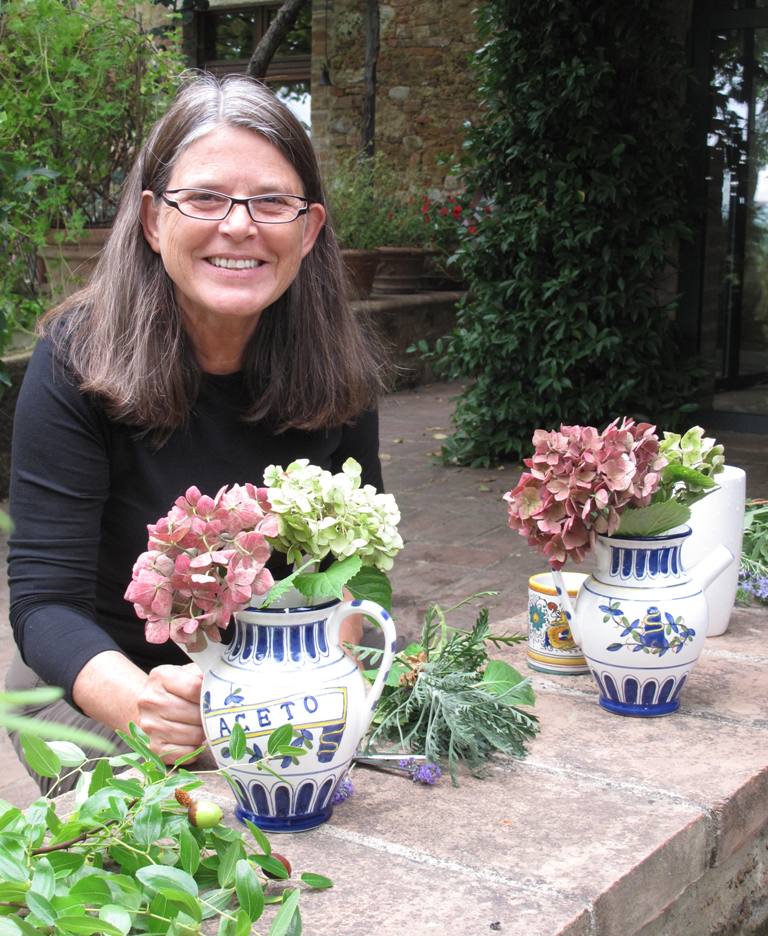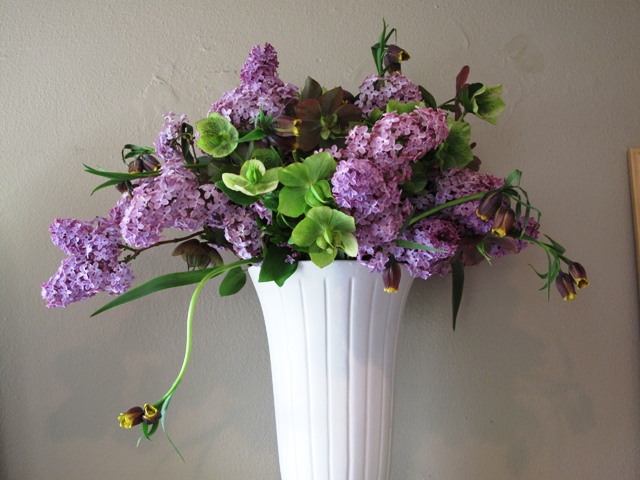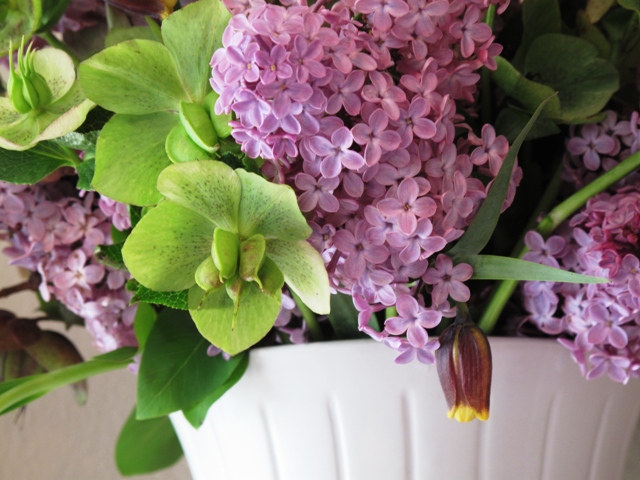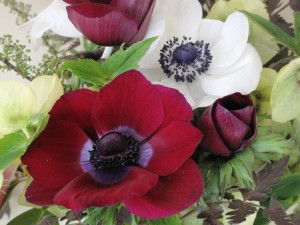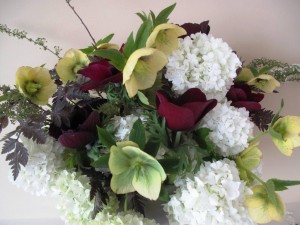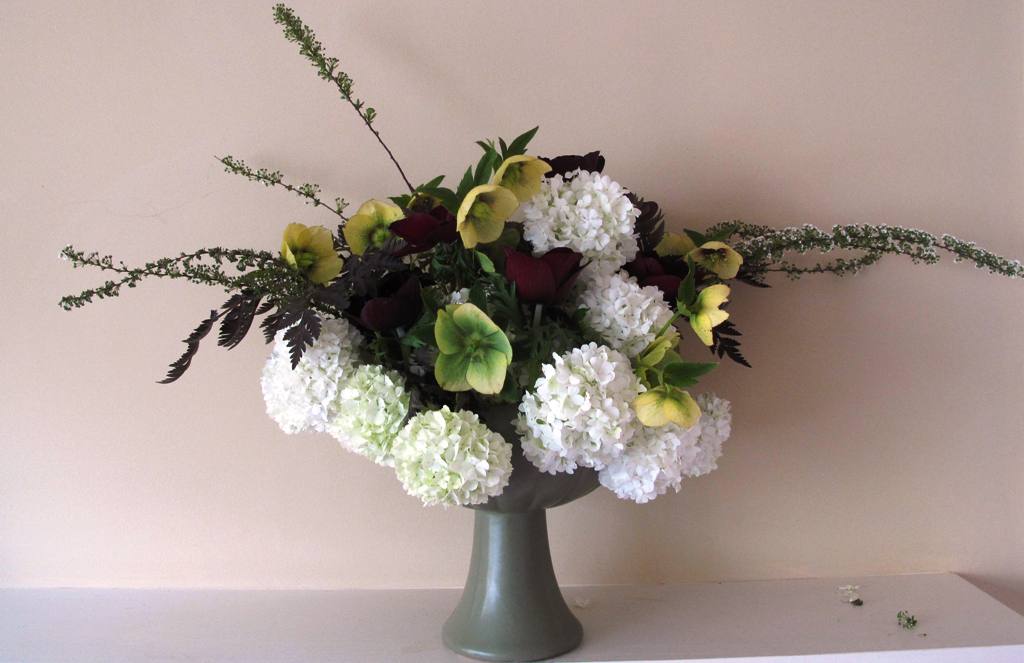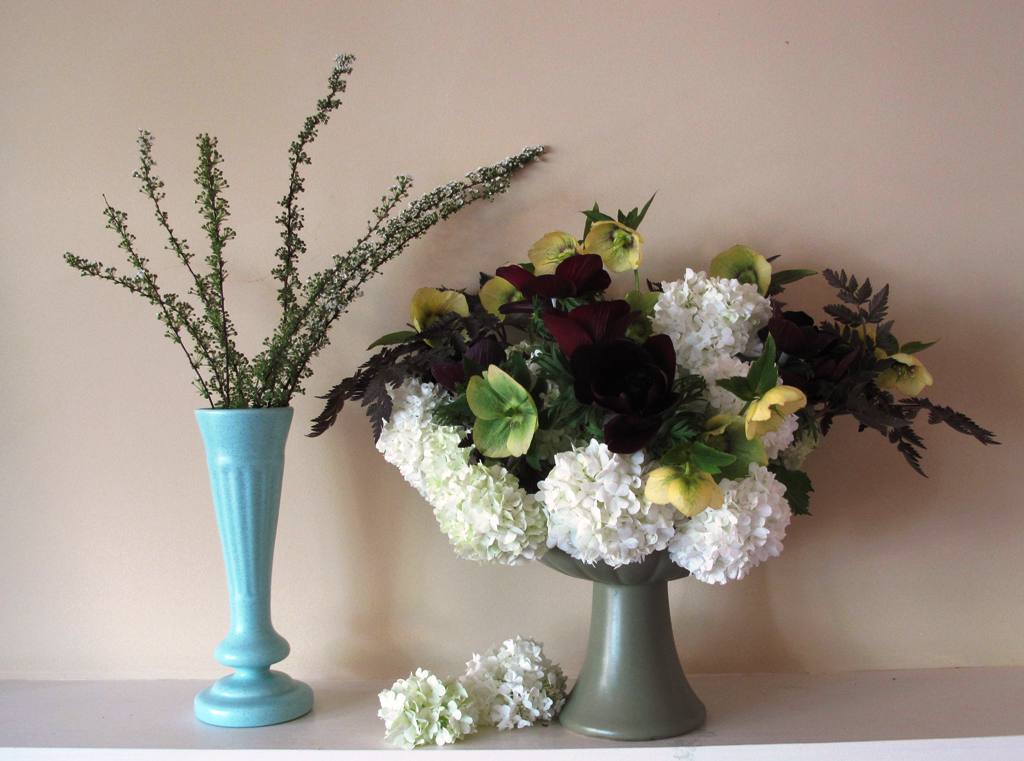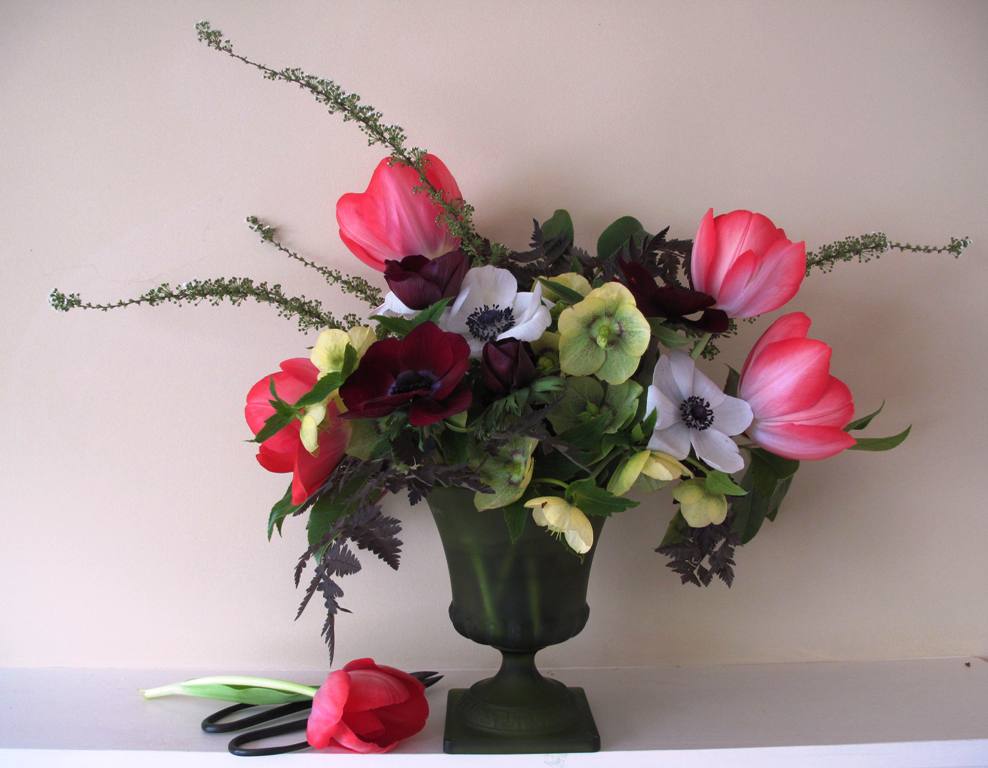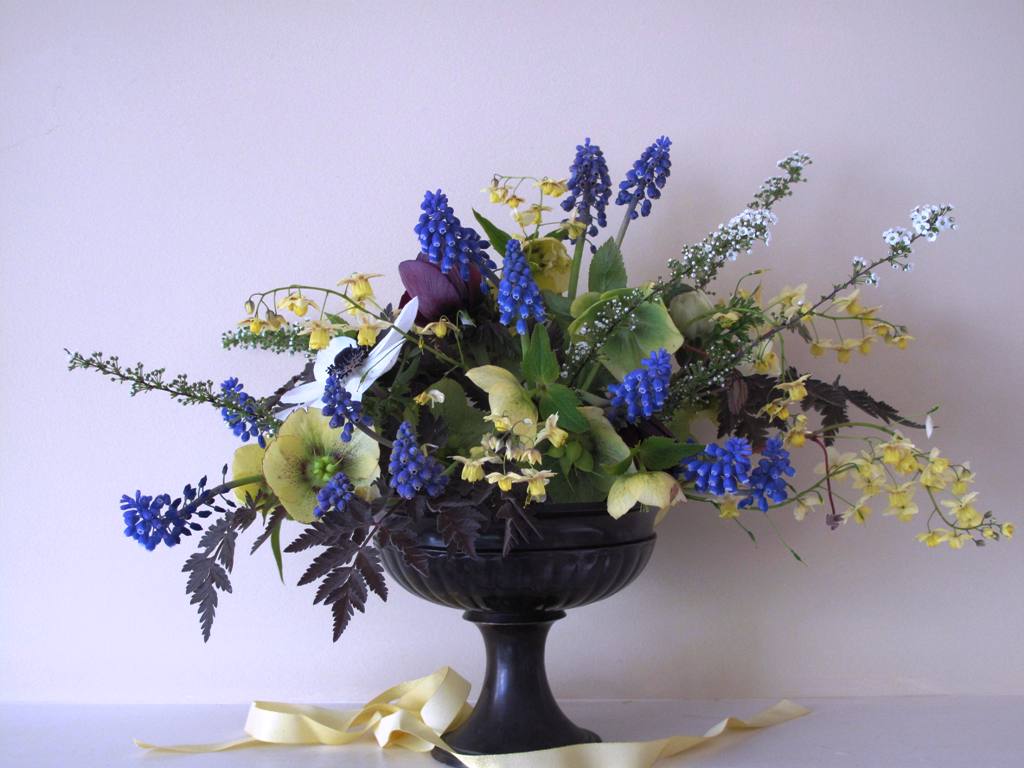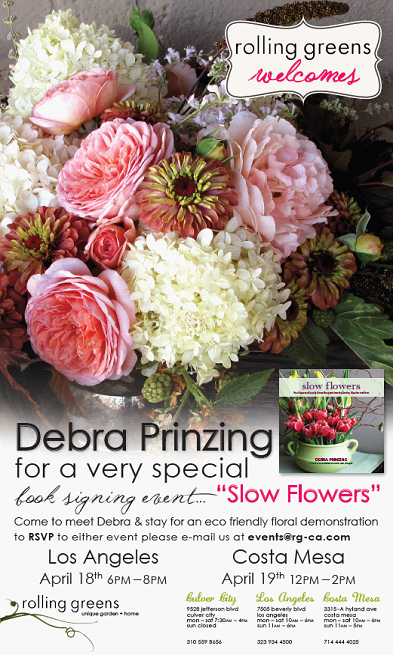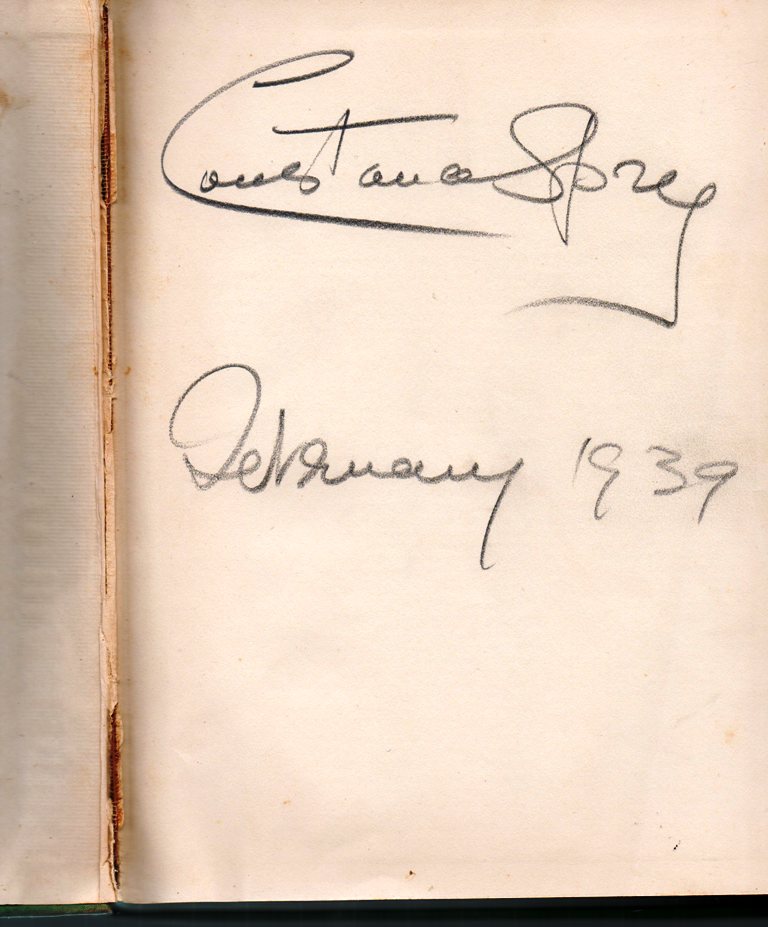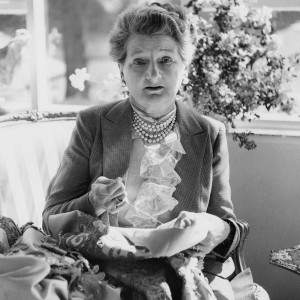Podcast: Play in new window | Download
Subscribe: Apple Podcasts | Podcast Index | RSS | More
The roots of this week’s episode began in December 2010 when I met Sarah Helmstetter and Alea Joy of Solabee Flowers & Botanicals, a Portland-based design team.
I was visiting Portland’s Flower Market, in the area where Oregon-grown product is marketed, working with photographer David Perry on The 50 Mile Bouquet. At the time, we weren’t sure of the book’s title, nor did we have a publisher, but we were forging ahead to capture stories of interesting people and their commitment to American grown, local, seasonal and sustainable flowers. Somehow we snagged an introduction and invitation to Solabee.
It was a dreary winter day; the time of year when true “local” floral product is at a minimum, but we found bounty and beauty inside the small storefront about the size of a building foyer in Portland’s historic Kenton neighborhood.
Sarah and Alea told us how the business was founded and their story became a section in The 50 Mile Bouquet in a chapter called “Botanical Wonderland,” that documented the Portland design scene’s embrace of a new floral ethos. Click on the image below to read the story about Solabee.
Sarah and Alea teamed up after both women had managed other flower shops in Portland. As creative partners, they specialize in sustainable design for weddings and events. They source from local farmers, grow their own flowers and harvest ingredients from house plants, such as begonias, tillandisas, orchids and ferns.
Young and self-financed, Solabee’s owners are resourceful, hard-working and creative. In the book, Sarah discussed gleaning foliage, branches and seed pods from her parents acreage and Alea described their “wild-crafting” exploits that included picking up nature’s debris from the urban terrain.
As you will hear in today’s conversation, a lot has transpired in the past six years including the recent discovering of the most perfect corner retail space in the Humboldt neighborhood in North Portland.
I visited Sarah and Alea at the new Solabee retail shop in April. It occupies a vintage Portland storefront with double-high ceilings that accommodate a mezzanine above. Light pours through the windows of the southeast-facing shop, dancing across the vintage mosaic tile floor.
Plants appear here in equal measure to flowers, which is a signature Solabee element. The women are known for showcasing living plants as a sustainable floral option and now, with the large display area, their shelves, walls and ceilings are lush and verdant. Plants add character and serve as the perfect complement to the wild and imaginative floral arrangements created here.
I joined Alea and Sarah in their mezzanine office where we could easily overlook and hear all the activity of their employees and customers downstairs. You’ll hear a little of that ambient sound in the background during our recorded episode.
Please enjoy this conversation about floral design, floral retail, sourcing techniques, creating company values and sustaining a small business. I loved reconnecting with Alea and Sarah and Solabee, and I know you’ll love meeting them here.
The Slow Flowers Podcast has been downloaded more than 100,000 times by listeners like you. THANK YOU to each one of you for downloading, listening, commenting and sharing. It means so much.
Next week, you’re invited to join me in putting more American grown flowers on the table, one vase at a time. And If you like what you hear, please consider logging onto Itunes and posting a listener review.
The content and opinions expressed here are either mine alone or those of my guests alone, independent of any podcast sponsor or other person, company or organization.
The Slow Flowers Podcast is engineered and edited by Andrew and Hannah Brenlan. Learn more about their work at shellandtree.com.
ABOUT OUR SPONSORS
 I want to acknowledge and thank our lead sponsor for 2016: Certified American Grown Flowers. The Certified American-Grown program and label provide a guarantee for designers and consumers on the source of their flowers. Take pride in your flowers and buy with confidence, ask for Certified American Grown Flowers. To learn more visit americangrownflowers.org.
I want to acknowledge and thank our lead sponsor for 2016: Certified American Grown Flowers. The Certified American-Grown program and label provide a guarantee for designers and consumers on the source of their flowers. Take pride in your flowers and buy with confidence, ask for Certified American Grown Flowers. To learn more visit americangrownflowers.org.
More sponsor thanks goes to Syndicate Sales, an American manufacturer of vases and accessories for the professional florist. Look for the American Flag Icon to find Syndicate’s USA-made products and join the Syndicate Stars loyalty program at syndicatesales.com
Thanks to Longfield Gardens… providing home gardeners with high quality flower bulbs and perennials. Their online store offers plants for every region and every season, from tulips and daffodils to dahlias, caladiums and amaryllis. Visit them at lfgardens.com.
And finally, thank you Arctic Alaska Peonies, a cooperative of 50 family farms in the heart of Alaska providing high quality, American Grown peony flowers during the months of July and August. Visit them today at arcticalaskapeonies.com.









